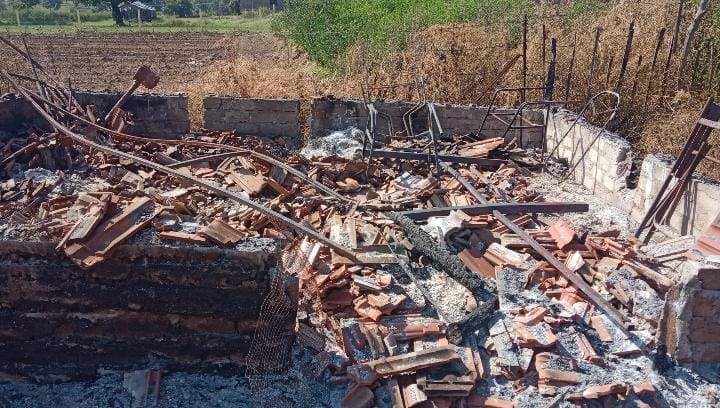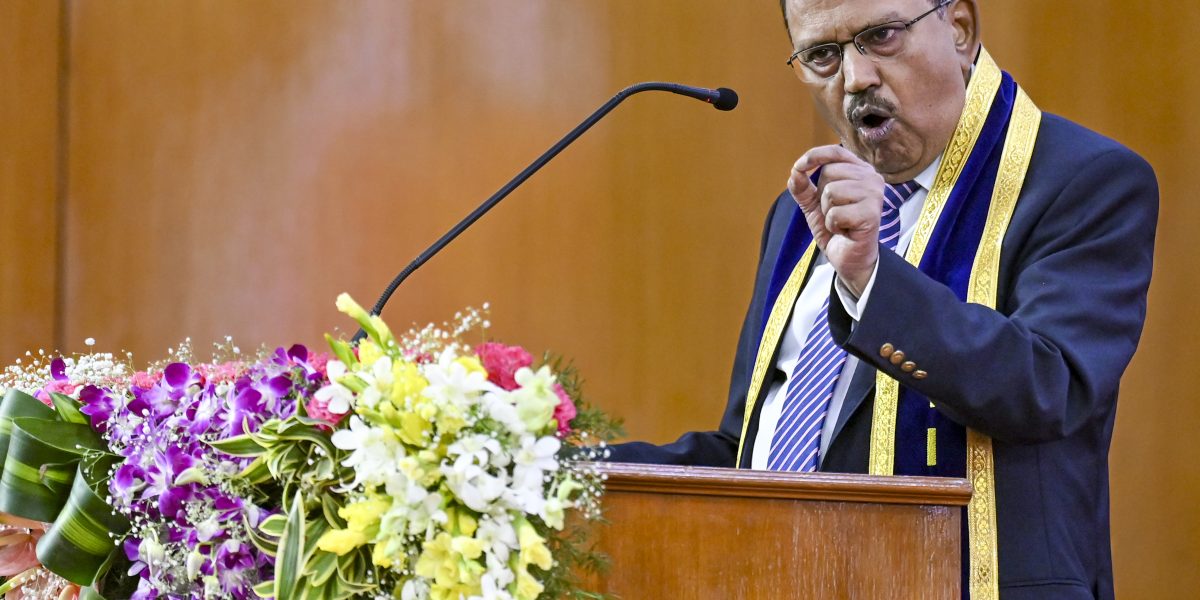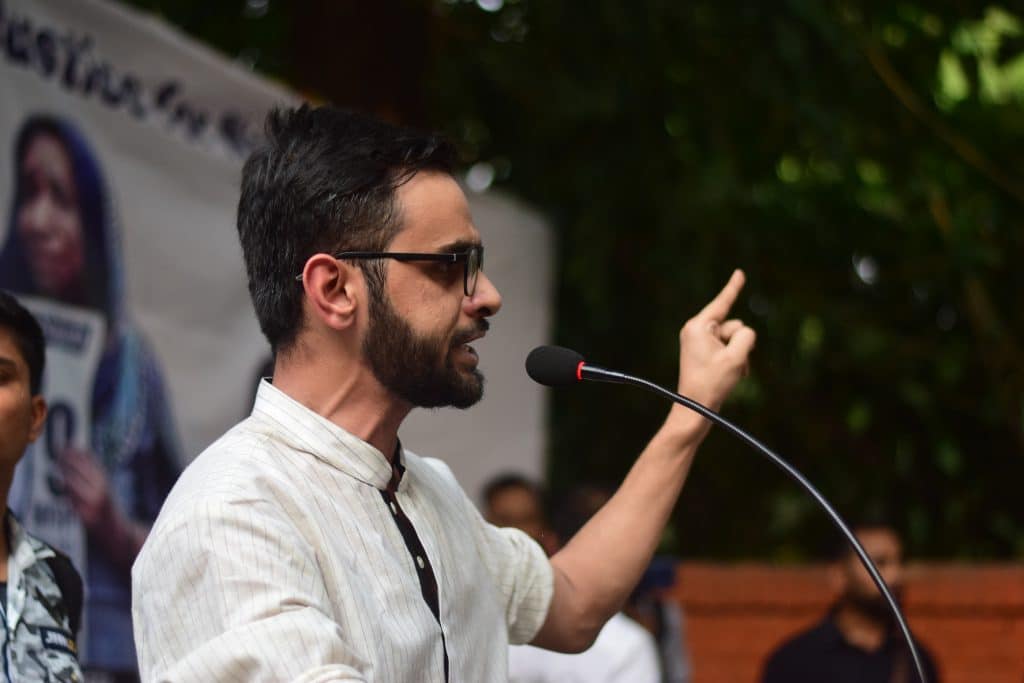
By Gautam Bhatia / The Wire
In the last few months, there has been something of an internal tug-of-war within the judiciary on the question of bail under the Unlawful Activities Prevention Act (UAPA).
As we have seen, the Delhi and Bombay high courts have pushed back against the notion that in a UAPA case, the judiciary’s role is to act as a stenographer for the prosecution, mechanically reproduce the allegations in the chargesheet, and keep people in jail until the ten or fifteen years that it takes to complete a trial. These courts have pointed out that, given how strict the UAPA’s threshold requirement is for granting bail, it behoves the judge to subject the prosecution’s case (which is the only case that exists at the time of bail) to equally strict scrutiny: both on the necessity of factual evidence being concrete and specific, and on the question of whether the legal standard under the UAPA is made out.
On the other side, we have the Supreme Court’s judgment in the notorious Watali case, as well as some trial court judgments (for example, in Safoora Zargar’s case), where the attitude has been that courts should adopt a feather-light touch towards the prosecution case when considering bail, and not look too closely or too deep at what the state has placed before them. If the result is that people stay in jail for upwards of a decade waiting for trial, then that is just the way it is.
The order passed on Thursday by the additional sessions judge at the Karkardooma Courts in Delhi, denying bail to Umar Khalid in the Delhi riots case, is significant because it represents that extreme version of the second approach.
As is well-known by now, the core argument of the prosecution in these cases is that the Delhi riots were the culmination of a well-planned conspiracy, which were “masterminded” by a group of people, including Umar Khalid, under the guise of protesting against the Citizenship Amendment Act and the National Register of Citizens (CAA/NRC).
In Khalid’s case – as a reading of the bail order makes pretty clear – there were several hurdles before the prosecution, to wit that: (a) Khalid had given no public call to incitement to violence – in fact, quite the contrary; (b) there was no material on record showing Khalid’s participation in funding or transporting arms, and no recoveries from him; (c) when the riots took place, Khalid was not even in Delhi. This being the position, the prosecution’s case was strung together by a set of witness statements to the effect that “X saw Khalid along with Z”, “A heard Khalid say G”, and – in some cases – “B heard Y say that Khalid said C” (it is important to note that the last of these statements legally could not be considered by the court at trial, because it is hearsay).
In this context, the bail order takes the following structure: first, the court records what the prosecution witness stated (in most cases, this witness is anonymous, carrying names such as “ROMEO” and “JULIET”); secondly, it records the defence counsel’s argument that – for certain well-founded reasons, the statement is ex facie unreliable (for example, it was recorded substantially after the fact, or is contradictory to another statement, or has already been disbelieved in separate proceedings); thirdly, it says that the defence counsel’s objections can only be considered during the trial, and are therefore discounted. Fourthly, and ergo, the witness statement is to be accepted as entirely true (no matter how implausible, contradictory, or vague in particulars it might be).
This is basically the entirety of the bail order. In paragraph 10, the court records witness Tahira Daud’s statement that Umar Khalid expressed support for Sharjeel Imam’s call for a chakka jam in a meeting in a Jangpura office on a certain date; it then records protected witness “Bond’s” statement that Umar Khalid called for overthrowing the government when “the time is right”, and for a chakka jam; it then records Bond’s statement that at a certain meeting two other people said that Umar Khalid had told them to use women and children as shields at the protests; in paragraph 10.4, the court refers to witness “Bravo’s” statement about Khalid’s presence at a meeting at the Indian Social Institute; then to a statement by the witness “Saturn” about a meeting between Umar Khalid, Khalid Saifi, and Tahir Hussain at Shaheen Bagh; then, in paragraph 10.5, to statements by witnesses “Smith”, “Echo”, and “Sierra” about a “conspiratorial meeting” at Jafrabad between Umar Khalid, Pinjra Tod, and others. In fact, paragraph 10.5 is particularly instructive, as it is quite representative of the bail order, and deserves to be set out in full:
“A conspiratorial meeting took place in the intervening night of 23/24.01.2020 at Seelampur, Jafrabad Protest site between Umar Khalid with Pinjra Tod members and others. It was decided to induce local women of Seelampur to start stock piling knives, bottles, acids, stones, chillypowder and other dangerous articles to be used in rioting as part of a conspiracy. The plan was to escalate the protest to the next level of chakkajam and then riots. This is confirmed by statement of protected witness Smith, Echo and Sierra. (Again, Ld. Senior Advocate referred to some minor inconsistencies which the witness will be required to explain during trial, but there are incriminating material against the accused in the statement of the said witnesses).”
On a reading of this paragraph, the following stand out. First, the vagueness of particulars: it is unclear who “the others” were or who the “members” of Pinjra Tod were, and there is no material detail at all about what specifically was said, and what made the meeting “conspiratorial”. This is particularly important because even if you were to discount the points that follow, and subject the statements to a no-touch scrutiny, the vagueness makes these statements incapable of supporting a concrete and specific charge under the UAPA. Secondly, there is not even light-touch, but zero scrutiny of the witness statements on their own terms; and thirdly, there is no engagement, but summary dismissal of the defence’s attack on the witness statements – again, on their own terms – with the observation that this is a matter for trial. It is important to ask oneself if a system rhetorically committed to the “rule of law” ought to be countenancing jailing people for years without trial on such quality of reasoning.
In paragraph 10.7, the order refers to statements by “Helium” and “Crypton” about Umar Khalid telling Bangladeshis to fight against the CAA (again, even if true and taken at the highest, not a UAPA offence); in paragraph 10.11, there is perhaps the only reference to a public speech by Umar Khalid, in which he “refers” to the visit of then-US President Donald Trump (what, specifically, Khalid said about Trump is not discussed). The court then refers to various protected witness statements about certain other individuals – not Umar Khalid – allegedly preparing for riots; at this point, it is unclear how this serves as proof of conspiracy against Khalid; later on, however, the court uses Khalid’s membership of a WhatsApp group – the DPSG – to establish his “links” with the conspirators.
In paragraph 10.14, hearsay evidence returns: witness “Bond” records that he was told by someone else called Asif that he, Asif, had received instructions from Umar Khalid and Nadeem to start riots; the court then records some other witness statements that do not feature Khalid, but uses that to conclude that the riots were, indeed, pre-planned, and not spontaneous.
In paragraph 10.23, the court refers to a “flurry” of calls that took place between a number of people after the riots started, including Umar Khalid. We do not know the content of these calls, so it is unclear what role they play in the Court’s analysis. The court notes that “the calls still show how different accused persons are linked and talking to each other after the riots have begun and more importantly, most of the accused persons involved reached a common place. [Emphasis added]” Yet again, however, there is no explanation forthcoming of what this linking actually shows: indeed, this is a fourth common theme running through the bail order.
Both when it comes to the WhatsApp group and to the phone calls, in the absence of any specific evidence, the court falls back on what appears to be a “guilt by association” argument (somewhat ironic, as none of the accused have actually been convicted yet): that Khalid’s role in the conspiracy is made out through these “links”, even though there is no evidence about what the specific nature of these links was.
In paragraph 12 onwards, the court refers to some more protected witness statements, which – again – stand out in their vagueness. In paragraph 12.3, witness “Gama’s” statement that Umar Khalid gave “provocative statements” is recorded (what were these statements? Whom – and how – did they provoke?); in paragraph 12.4, witness “Delta” states that Umar Khalid gave “a speech against the government” (…and?); in paragraph 12.5, witness “Saturn” states that “Tahir Hussain also went to Shaheen Bagh on 08.01.2020 where Umar Khalid and Kahid Saifi were also present” (… and?); in paragraph 12.6, witness “Helium” states that Umar Khalid talked about educating Bangladeshis to fight against the CAA (… and?); in paragraph 12.7, protected witness “Beeta” (sic) states that he saw a video of Umar Khalid giving a speech about coming out onto the roads for Trump’s visit (…and?); this goes on in the same mould, with similar anonymous witness statements – vague and free of material particulars – recording, for example, Umar Khalid telling a third party about spilling blood.
This detailing is undoubtedly tedious; but it is important to set it out, because it helps to contextualise the court’s legal finding about Umar Khalid’s “role” in the riots, which occurs in paragraph 12.1 and 14:
“In terms of the chargesheet, as discussed above, it is noticed that the name of accused Umar Khalid finds a recurring mention from the beginning of the conspiracy till the riots. He was a member of Whatsapp group of Muslim Students of JNU. He participated in various meetings on 07.12.2019, 08.12.2019, 13.12.2019, 26.12.2019, 08.01.2020, 23/24.01.2020, 10.02.2020. He is also a member of the DPSG group and attended meeting at Indian Social Institute (ISI) on 26.12.2019. He gave reference to Mr. Donald Trump, President of USA in his Amrawati speech on 17.02.2020. He was also mentioned in the flurry of calls that happened post riots, as mentioned above. He was instrumental in creation of JCC.” [Emphasis added]
“Ld. Senior Advocate for the accused had correctly argued that accused Umar Khalid was part of the Whatsapp group MSJ and DPSG but he has not written many messages in those groups and they are not overtly provocative or incriminatory. However, the fact that he was part of such groups created for specific objects and his acts or presence throughout the period beginning from the passing of the CAB Bill in December 2019 till the February 2020 riots, as mentioned above, has to be read in totality and not piecemeal. He has connectivity with many accused persons.” [Emphasis added]
The case against Khalid, therefore is based on: (a) membership of WhatsApp groups; (b) participation in various meetings, the particulars of which are provided by anonymous witnesses, for the most part in vague terms; and (c) being mentioned in a “flurry of calls” after the riots began.
Out of these three legs, the first and third wouldn’t be enough – as they say colloquially – “to hang a dog on.” Of the second leg, as pointed out above, every statement, in all its glorious vagueness, is accepted by the court without any further analysis; indeed, as we have seen above, many of these statements – even taken on their own terms – are allegations of Khalid engaging in constitutionally protected, legitimate speech; when you take those away, what you are left with is essentially four or five anonymous witness statements claiming that Khalid said X or Y incendiary or violent thing. Now, the court engages in no analysis about whether these statements – even if taken as absolutely true – would constitute a UAPA offence; instead, it undertakes an exercise of filling in the gaps in the prosecution’s case, by pulling together these statements, “membership” of WhatsApp groups, and “connectivity” with accused persons, throwing them together, and claiming – without reference to the legal standards – that the bar under UAPA has been attracted.
Thus, on a close reading of the 61-page long bail order, the denial of bail to Umar Khalid is based entirely upon an act of judicial stenography: the court reproduces the statements in the chargesheet, refuses to examine them on their own terms, refuses to engage with the defence’s examination of them, and finally – and most importantly – fills in inferences of guilt where the prosecution’s case is vague or missing particulars. It is crucial to note that UAPA precedent does not require the court to act as the prosecution’s stenographer in bail cases: not even the Watali judgment goes that far, and – as we have seen – there are, by now, numerous high court judgments (which the court fails to engage with) that articulate the basic common sense that a UAPA case does not require a judge to act as if they have undergone lobotomy just before writing the judgment.
The implications of this are both obvious and frightening. The bail order takes us to a position where the prosecution can write literally anything in its UAPA chargesheet – vague, inconsistent, implausible, ex facie false, things that you would laugh at if someone presented them to you and tried to make you believe them – and we will have a bail order that will reproduce those statements, park all objections for a trial that will not finish for the next ten years, and ensure that people remain in jail all that time. This is the embodiment of a broken criminal justice system – broken not just by the UAPA and its language, but broken by judges who, somewhere in all this, seem to have forgotten the judicial role as being one that tempers and confronts state abuse.
It now remains to be seen whether that internal tug-of-war that I mentioned at the beginning of the article will see a course-correction when this – or other cases – are appealed; or whether we will only see the continued descent of the judiciary from sentinel on the qui vive (lookout) to stenographer for the prosecution.
This article first appeared on thewire.in





